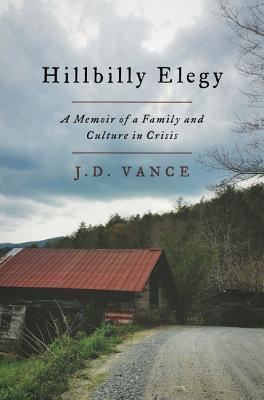On May 29th, 2017 at approximately 10:38 am I felt old. I spotted what may or may not be the first gray hair on my head. I can’t confirm it is a gray hair. It is possible it is a blond or platinum blond hair. There is a chance that the lighting in every bathroom I’ve used since this time is part of a global conspiracy to cast doubt about the veracity of the hair’s color.
Let’s Talk About Me
I have been a member of the same church for about twenty years. While I have been there quite some time, I have to confess that I don’t know people well. When you come of age in an institution, there are some things you are oblivious to. For me, it’s names. Especially when a large part of the congregation are my parents’ age or older. A lot of faces blur together, or I know names but I can’t put faces to them.
My parents left the church about five years ago for reasons that weren’t explicitly stated. I’d call it the culmination of years of frustration which led to their departure. In the years since their departure, my interactions with fellow parishioners has become very predictable.
Them: Hi.
Me: Good morning.
Them: I haven’t seen your parents in a while. How are they doing?
Me: They’re going to another church, but they’re fine.
Them: Well tell them I say hi.
Me: Will do.
My parents were involved in a myriad of groups and committees over the years. Sometimes these conversations pertain to which committee they served on with my parents; stewardship, finance, hunger, and Stephen Ministry. To me it doesn’t matter. I wasn’t on these committees. And when my parents were, I was busy being a cynical teenager.
At no point in these interactions does the parishioner introduce themselves. Each Sunday it seems someone new comes up to me and asks me to say hello to my parents for them. I don’t know who these people are. When I get cornered by these individuals, I try to be nonchalant and glance at their name tag. I have a short term memory, and by the time I speak to my parents, the name is long forgotten, what committee they served on together, as well as their message. But I don’t worry or care, because I know I’ll be asked the same question next Sunday and I’ll play the role of world’s worst courier.
Sometimes I get a one-two punch. My brother is a pilot in the Air Force. I always feel that compared to being a consultant, being a pilot is a much more interesting line of work. I believe my brother has not set foot in the church since his wedding – which predates when my parents stopped attending by a few years. There’s a few reasons for why he doesn’t attend, the biggest reason being he lives 19 hours away. Although he and his wife have not been physically present in a long time, he’s still a member and his name is on the prayer request list for active duty military.
When the line of questioning about my parents runs dry, sometimes it switches to my brother. How is he? Is he deployed? When is he coming home? What does his wife do? My answers are: good, yes/no, no idea, grad school.
Then the final line of questioning involves my wife. When is she performing flute with the choir next? No idea. While I am her husband, I am not her booking agent.
At this point the conversation almost always ends. Never does anyone ask me how I am, what I do, or what I’m interested in. Even if my brother were subjected to the same weekly inquisition, I feel the question well would run dry with him too. Not only because of the reasons I’ve outlined, but he’s much more taciturn than me.
Sadly my extended family is the same way. If you asked them what I did, they would probably reply that I sell insurance. The reason they would say this is because I worked at an insurance company several years ago. Because if you work at an insurance company, you must therefore sell insurance.
You think after cornering me every Sunday for the last several years and exchanging middling pleasantries, parishioners would tire of asking the same questions and getting the same response. But apparently not. I’m like catnip for the parishioners for information about my parents.
I could easily turn this conversation around. Instead of being asked questions, I could ask them questions. How are you? What do you do? What are your kids up to?
The hesitation on my part stems from the part that I have no idea who these people are. In some ways I feel like a rock star: everyone knows my name, but I don’t know who they are. But it’s not too much like a rock star because apparently my parents are the rock stars; I’m just the opening act.
What really strikes me as odd about these conversations is that these people watched me come of age the last twenty years. You would think that “knowing” – rather being in the proximity of someone, for an hour or two, once a week, over two decades would warrant more intimate conversation.
Both parties are at fault here. I can ask questions too, but I’m deterred by the fact that the people who speak with me don’t seem interested in anything other than exchanging pleasantries. Once they get their weekly update about my folks, they skedaddle to the donuts and coffee.
How much longer will this go on? My parents can be gone for ten more years and I’m sure I’ll still be asked about them. It’s great to know that they’re missed, but it’s evident that members of the church cannot accept that both my parents and my brother are not here. However, I am here. Let’s talk about me. If I stopped attending the church, who would you ask about how they’re doing? Who would you ask to relay the message of well wishes?
I’m an adult and I am entitled to age appropriate conversations. I have opinions and I consider myself a good to great conversationalist. Please talk to me. We don’t need to be best friends, or even friends. We can talk about my parents, but once we get that out of the way, let’s talk about the Cubs, or the sermon we just both sat through.
It’s going to be hard for me, but I’m going to start making the conversation more about me. I am incredibly selfless, perhaps to a fault, but come Sunday mornings I’m going to start bringing everything back to me. Corny as it sounds, I may have to start using lines like this: “Sure my brother is deployed, but I’m in the thick of a client deployment. It’s not the same you know, but I’m fighting the good fight too.” Or maybe this, “Yeah my parents really like their church, but what did you think about the pastor’s sermon today?”
Stepping out of my comfort zone is going to be hard, but I don’t think I can suffer more Sundays of empty conversations. I’m going to talk about me.
An Open Letter to Chicago’s Classic Rock Radio Stations
 |
 |
|---|---|
 |
To Chicago’s Classic Rock Radio Stations:
As a loyal listener for my entire life, we’ve shared a lot of moments together. I remember taping songs off the air when I was young. We’ve shared countless deep cuts, Memorial Day Rock-Blocks, and Two-for-Tuesdays. I remember I was once overjoyed when it was a Two-for-Tuesday and you not only played “We Will Rock You” and “We are the Champions” but a third Queen song too.
Times have changed, but sadly you haven’t. After 30 years of loyal listening, I’ve decided I can no longer listen to you and thus effective immediately, I am removing you from my car radio presets.
I know, you think this is one of those “it’s not you, it’s me” letters, but it’s not. It’s you. I really enjoy all of the bands you play. Houses of the Holy by Led Zeppelin is one of the best albums ever; Pink Floyd taught me more about music than any other band I’ve listened to; Van Halen is arguably the greatest American rock band. You play all of these artists and more, but you play nothing but the same songs constantly.
It may seem like a lot to ask that you play different music by these groups considering most of them are no longer actively recording. However, you’ve had three decades to find worthy B-sides and non-singles to broadcast over the airwaves. When I hear the cash register at the start of Pink Floyd’s “Money” I change the radio station. Hearing the splashy hi-hat of John Bonham in the intro to Led Zeppelin’s “Rock and Roll” – something I once enjoyed – now makes me feel indifferent and blasé. You repertoire is as tired as David Lee Roth waking up from a three-day bender.
You play Pink Floyd’s work post The Wall but how can you ignore Bruce Springsteen’s work after Born in the USA? You have no problem playing R.E.M’s “It’s the End of the World” but with the exception of “Losing my Religion” you ignore everything else they did and that’s a shame.
If aliens in outer space are listening to Chicago’s radio stations, they must be under the impression that we love hearing Boston and Journey every other hour, on the hour. Your ads over the year make it seem like we should really care about these bands and be passionate. How are we supposed to be passionate when we only know the greatest of the greatest hits?
It was you who sent me a license plate holder with Aerosmith’s logo on it. I’m not sure why you decided I needed this. If it was 1975 and I had a T-top, I’d totally put that license plate frame to use; but it’s the 21st century and I’ve never given a damn about Aerosmith. I’ve never even listened to Toys in the Attic and never plan to.
The classic rock radio format has been around for quite a while, but you haven’t done anything to make it exciting. I remember I winced when I first heard the Smashing Pumpkins – my favorite band as an adolescent – being played by you. When you do play music from bands outside the classic rock canon, it’s the definition of cherry picking. Somehow it’s ok to play Nirvana and Pearl Jam, but you omit Oasis. Why do you not play Rage Against the Machine or Nine Inch Nails? Do they rock too hard? Or is it that songs which don’t involve topics such as rock and rolling all night and partying every day aren’t allowed? Why don’t you play David Bowie songs other than “Fame” and “Suffragette City”? And why don’t you play Prince?
I’m not trying to tell you what to do, but if you want to add new music to your playlists, I think most, if not all, of The White Stripes oeuvre is up your alley. Heck, even the Strokes and Queens of The Stone Age would fit in well. If bands from the late 1990s/early 2000s scare you, there’s a lot of independent release releases in the 1980s and 1990s that would fit in well with your format; the Replacements, the Pixies, Sonic Youth, and Dinosaur Jr would all fit in just fine on your radio waves. They may not all have coruscating and finger-tapping guitar work, and they aren’t necessarily stadium rock either, but they all have great radio-friendly singles that would help break up the monotony of your rock block of Rush.
I feel I’m wasting my breath here. Given your longevity, there is obviously a market for nostalgia and you’ve cornered it well. Your satellite competitor has dozens of channels that relish in nostalgia as well, but their playlists are much more varied and deep. With your shallow playlists, you’re incredibly predictable.
Since so many of these songs have been used in commercials and in pop culture over the years, and you refuse to acknowledge most great rock music post-1993, my fatigue has reached a breaking point and it’s time to say good bye.
Farewell from my radio presets, but thanks for the memories.
Erik
Hillbilly Elegy: Requiem for a Memoir
One of the most talked about books of the last few months is J.D. Vance’s  Hillbilly Elegy. In it, Vance discusses growing up poor in rural Ohio but overcomes all sorts of family and socioeconomic adversity and ultimately graduates from Yale Law School.
Hillbilly Elegy. In it, Vance discusses growing up poor in rural Ohio but overcomes all sorts of family and socioeconomic adversity and ultimately graduates from Yale Law School.
Memoirs are usually chronological and full of anecdotes. When was the last time reading a memoir left you satisfied? Vance’s book doesn’t break the mold of the memoir structure. It’s his prose – specifically his candor and clarity – that separates this from the rest.
I can see why there’s so much discussion about this book. A lot of people believe that Donald Trump was elected because he appealed to, for a lack of better word, hillbillies. People looking for an answer about the election will be disappointed. While I do feel the book is essential, I don’t believe it’s essential to understand the 2016 election. A 2016 release date and the topic of rural America are mere coincidences with the election and its outcome.
When reading the book I couldn’t help but think about There Are No Children Here. Written almost 30 years ago, you could easily swap Appalachia with housing projects in Chicago and the narrative is similar: drugs, violence, parental strife, premature parenthood, income segregation, and a stretched thin social services infrastructure. In many ways our country has come a long way, but stories like Vance’s vividly illustrate that we have a long way to go.
While the perils that populate Vance’s family’s life are all difficult topics which occupy many of the pages of Hillbilly Elegy, Vance doesn’t belabor the point; the book is all thriller, no filler. For being in his early thirties, what he has dealt with in his life could have easily have filled a book double in volume. Vance doesn’t let stories don’t overstay their welcome. He deftly avoids nostalgia and other memoir tropes and keeps the reader invigorated.
In the last few chapters, Vance moves out of Middletown, Ohio to attend Ohio State and then Yale. It’s here where we start to see a mature, adult Vance emerge and his writing adjusts accordingly. He pivots from seeing the world from a child’s perspective and starts effortlessly intertwining self-reflection.
For example, the first time I read the following sentence, it kicked me in the gut: “The Great Recession, and the not-great recovery that followed, has hastened Middletown’s downward trajectory. But there was something almost spiritual about the cynicism of the community at large, something that went much deeper than a short-term recession.”
This sentence sets the tone that permeates the last third of the book. Now that he’s moved and returned home, he can see the forest for the trees. He starts realizing the paradoxes of the community he grew up in; the residents of Middletown love their country, but they believe the system (read: Government or any authority) is against them. The aforementioned cynicism makes people think that it’s not their own fault they’re a loser; it’s the government’s fault. Stewing around with that belief “foments detachment.”
Vance’s candid self-awareness really set this book apart from other memoirs. After reading about his upbringing, which is exotic by most standards, he doesn’t just keep the book going with anecdotes; he graciously lets us into his mind. He doesn’t have answers for everything going on in his world, nor does he try to solve them. While the book was published the election was in full swing, readers wanting answers about the election outcome will be disappointed with this book. Very few politicians are named, and why should they be? This is Vance and his family’s story. His family, and his hillbilly family, have been left behind by politicians for decades. Readers should focus on the narrative and not focus on solutions. By understanding Vance and his family’s story, we can better understand ourselves. And once we have that, I believe we can gain a greater empathy with one another and hopefully that can lead to better discourse that can help eliminate socioeconomic issues in this country.
Distracted Driving
I was planning on writing a book review of Thomas Frank’s Listen Liberal. While I own a physical copy of the book, I decided that because I had a six hour drive for work, I could be “efficient” and listen to the audiobook as I trekked across the interstate.
I’ve only listened to audiobooks twice in my life; both times I was driving and it was snowing. Turns out it’s more important to pay attention to the road – when I can see it – than listen to the book.
I’m not posting a review right now because when I was discussing with a coworker one of the arguments Frank makes in his book, I wasn’t able to defend it. In the back of my mind, I could only think that it was because during that chapter I was in white out conditions on I-80/94. Because the exchange left my pride a little wounded, I decided that I would read the physical copy of the book so I could retain the information better.
I listen to a lot of NPR – which is predominantly talk – and can retain information from stories rather well. It might be because when I drive and listen to NPR it’s usually doing errands. Also, I never do errands when it’s snowing. The key difference between the two is that NPR stories are only several minutes long. Compared to audiobooks, NPR stories are bite size.
While comparing audiobooks to NPR may be like comparing apples and oranges, I do find it interesting that while both formats are primarily spoken word, my retention is apparently better when it’s shorter in duration. I do not think that listening to a book in say n-many five minute chunks would help with my retention. In fact, I’d find it rather annoying.
I think audiobooks are a great idea. However, they might best be suited for autobiographies or fiction. Based on my soft defense of the author’s argument, I realized that when I “read”, especially in an extended format, it’s not beneficial for me to be multitasking. I bet even if there wasn’t precipitation I would be in the same predicament. From now on I’m going to keep my focus on the road and worry about whether or not I know the lyrics to whatever mixtape I’m listening to instead of comprehending something as complex as NAFTA.

